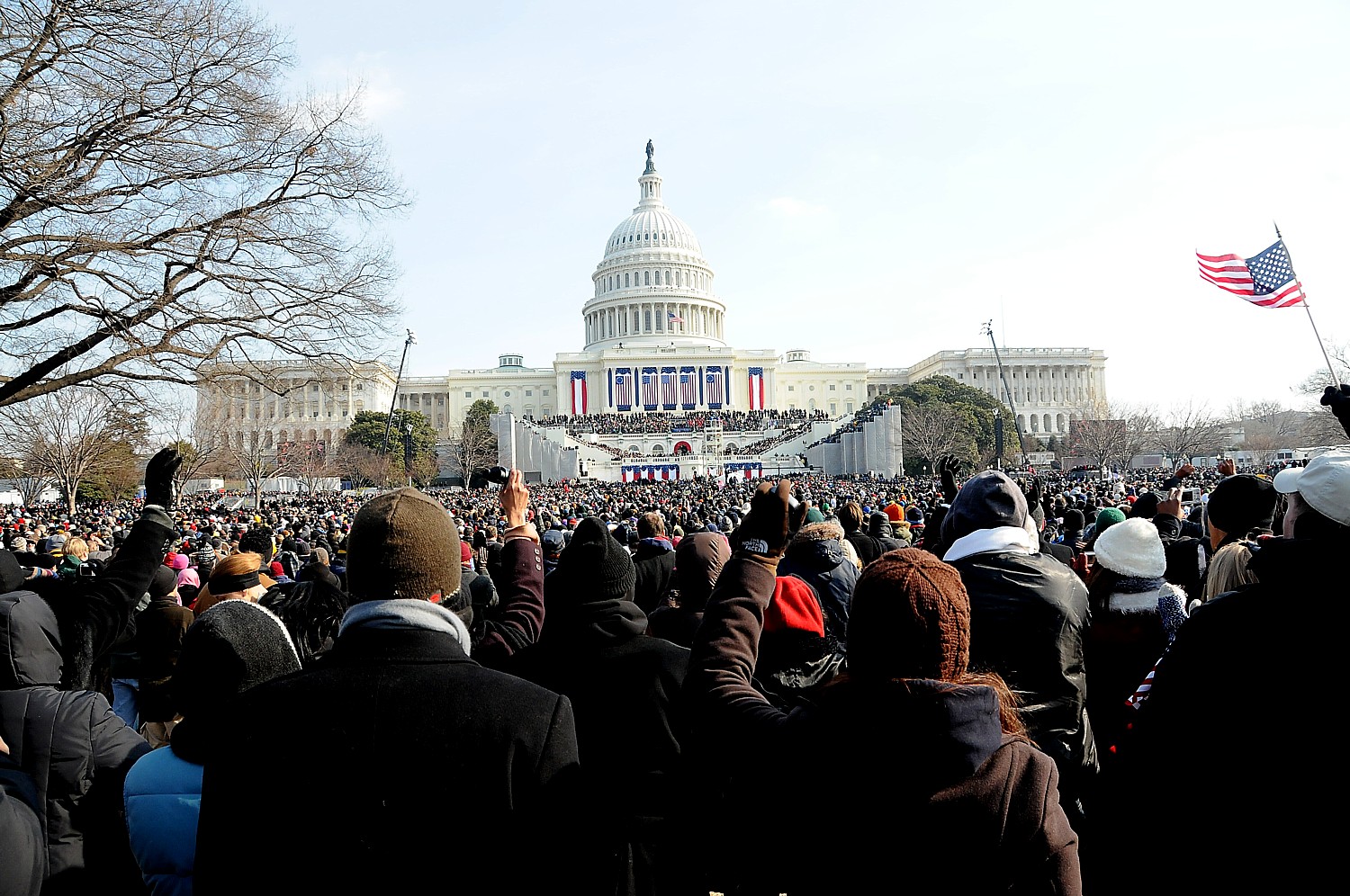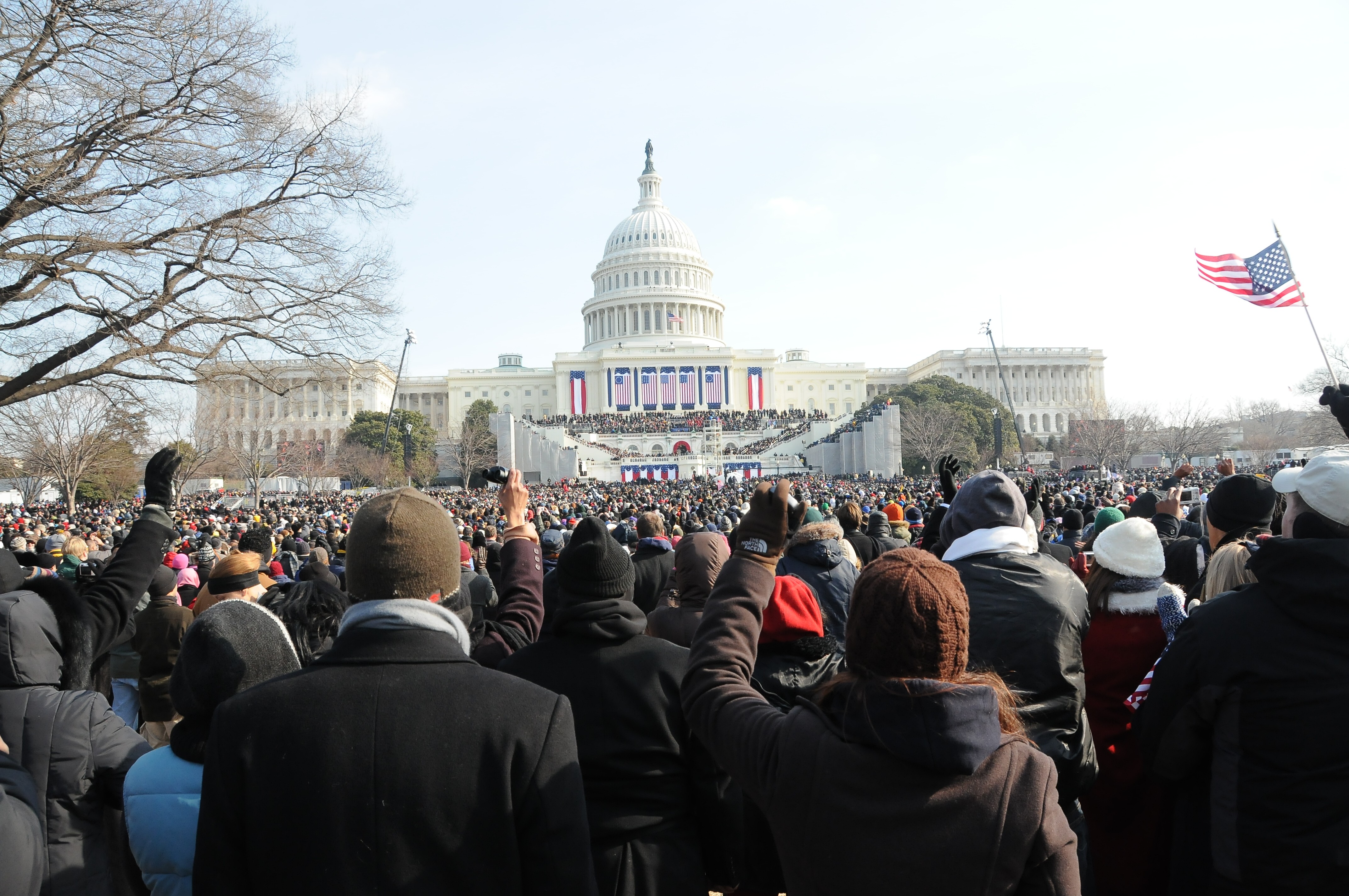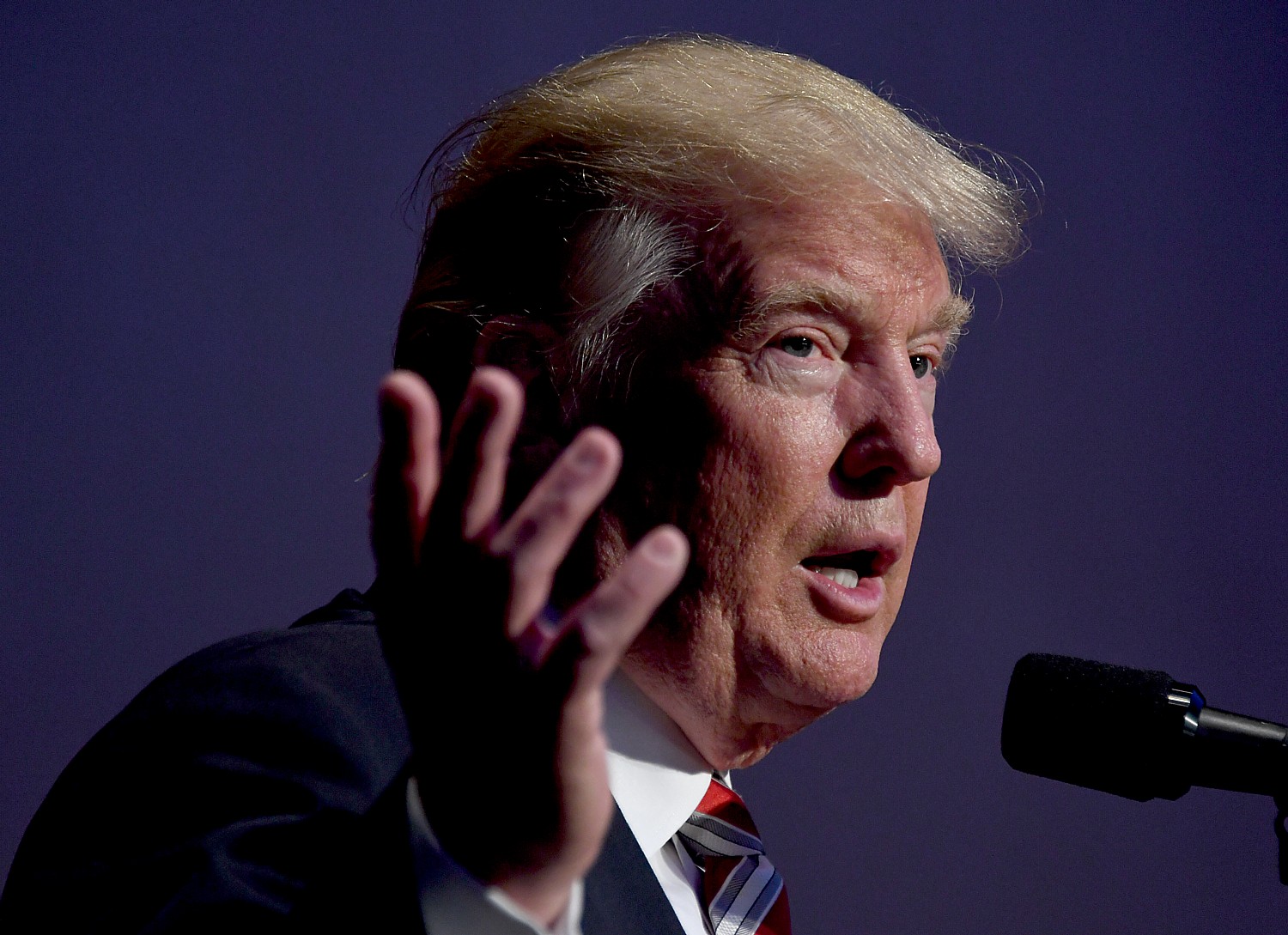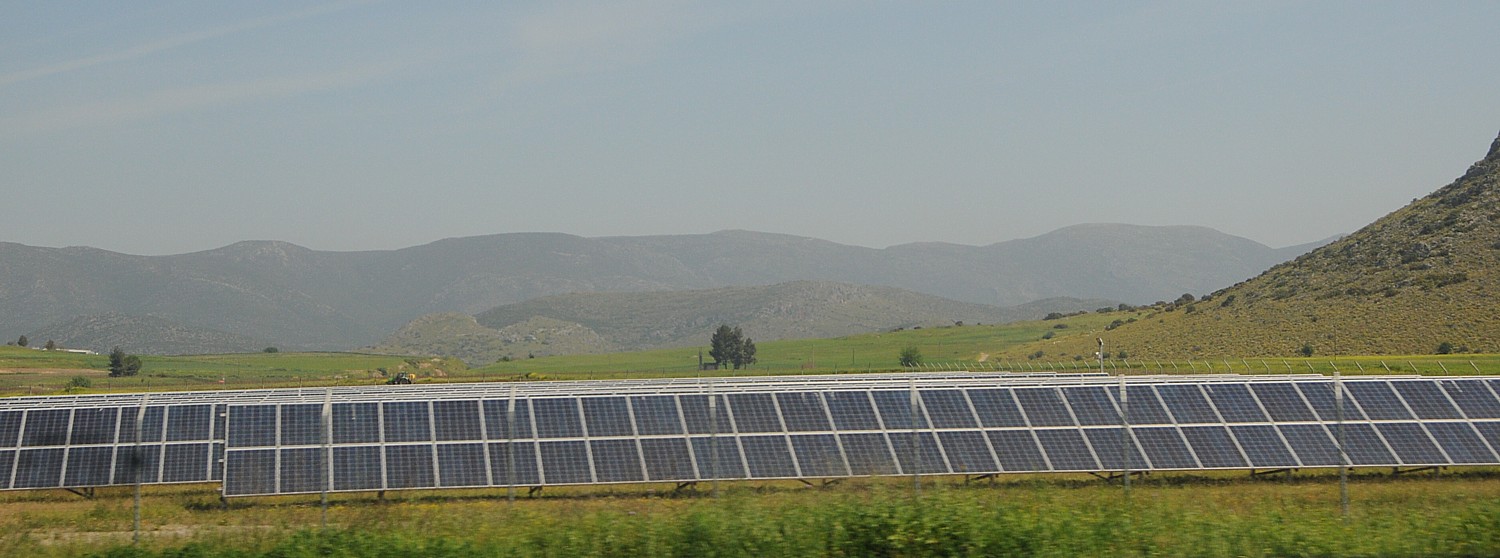
Karen Rubin, News & Photo Features
Petitions are circulating such as this one from Credo:
“Donald Trump is unfit to serve as president and did not win the support of the majority of the American people. Hillary Clinton is set to win the majority of the vote by more than 2 million votes despite widespread voter suppression and the FBI’s interference in the election. Honor the majority vote and elect Hillary Clinton on Dec. 19.”
I’m wondering how many of the electoral voters are actually Never-Trumpers, and now, since they have seen how Trump would govern, who he intends to appoint to run the country (a climate denier to run the EPA; an anti-public education billionaire to run Education; an unhinged fired General to run national security), might be having a twinge of remorse, especially given the fact that Hillary Clinton actually won the popular vote by more than 2 million votes (most ever for a candidate who didn’t actually win the presidency), and new revelations about Trump’s conflicts of interest, his lack of transparency and his pay-to-play approach to foreign relations (an echo of Richard Nixon’s, “If the president does it, that means it’s not illegal”).
Nor did Trump “win” the key swing states that put him over 270 electoral votes fairly.
Reports of Russian interference that turned the tide of the election should be a grave concern to Electoral College voters, if they consider themselves patriots. Throughout the campaign, it was clear the Russian government was actively working to influence the outcome in Trump’s favor. State-sponsored Russian hackers provided troves of damaging emails and documents to WikiLeaks and other websites. Paid Russian trolls disseminated fake news across US social media sites to spread misinformation favorable to Trump. And though Trump lied about it, his campaign was in direct contact with the Russian government throughout the election, including his strategist Roger Stone (who cut his teeth on the Richard Nixon campaign). Trump has well established connections to Russia through many business dealings, and he spent considerable time during the campaign praising Russian President Vladimir Putin. “Now that Trump has access to classified intelligence and the nuclear codes, we can’t trust what he will do with them. His presidency is a clear threat to American democracy and our national security,” writes Josh Nelson, Deputy Political Director for CREDO Action from Working Assets.
Moreover, there is strong evidence of voter suppression aimed at likely Democratic voters (minorities), including making it difficult to obtain newly required voter ID materials, closing polling places and reducing early voting. In Wisconsin, where Clinton lost by only 27,000 votes, 300,000 eligible voters lacked the strict forms of ID needed to vote, and the state saw its lowest turnout in 20 years, especially in Black communities. And across the country, Black people were forced to wait in line twice as long on average as white people.
In North Carolina, there were 158 fewer early voting polling places in Black communities, and Black turnout was down 16 percent. And by the way, how is it possible that the Democratic won the Governor’s race, but that Clinton at the top of the ticket didn’t win? – why is there no challenge to that vote, as the losing Republican Governor has waged?
“It’s entirely possible that without voter suppression, Clinton would have won the Electoral College along with the popular vote,” Nelson states (though it is harder to prove voter suppression than lie about the existence of voter fraud).
Indeed, Clinton won the popular vote by more than 2.5 million – a bigger margin than many elected presidents won by, and the biggest margin of any person who did not go on to actually become president (Al Gore included). Trump has already proved he will dismiss the will of the majority. Why is it that the “Real America” disqualifies urbanites, women, minorities, professionals, college educated people, especially Ivy Leaguers?
In just the first week since seizing the election, Trump has demonstrated that he will be exactly who he showed himself to be, starting with the Team of Thugs, Reprobates, Misogynists, Corporatists, Racists, White Supremacists, not to mention those who are totally inexperienced to carry out the functions they are tasked with, he has surrounded himself with and who he is naming to cabinet and key offices. It is emerging as a “Team of Billionaires and 1-Percenters,” who built their financial empires on the backs of the very white working class people that Trump pretended to care about.
He has shown that he will protect his own business profits at the expense of the national interest – unabashedly doing business and extracting favors from foreign dignitaries, evoking Richard Nixon’s line, “If the president does it, then it isn’t illegal.” There is no doubt that he has realized he could leave office $100 billion richer. He absolutely doesn’t care about conflicts of interest. Imagine if Hillary Clinton had done anything remotely like that upon becoming the president-elect. They would have impeached her before inauguration day (Republicans mounted a special investigation into the Clintons’ Christmas card list when Bill took office).
Trump already showing he will trample transparency and a free press, preferring to continue to tweet outright lies should also have the Republican electors who claim to be the guardians of the Constitution quaking. That he will attack the press and a Hamilton actor appealing for his administration to just consider all Americans, but not condemn the Neo Nazis who are cheering his victory with a Hitler salute, that he dictates to the media how they will photograph him, and shuts out media that he feels don’t represent him well, are only the preview to the propaganda he will wage.
And now Trump declares he would take away citizenship and jail anyone who burns the flag, which the Supreme Court has already ruled is protected free speech – further evidence that he aspires to follow Vladimir Putin’s model. Trump doesn’t know and doesn’t care about civil rights or the Constitution.
And those Electoral Voters should be downright shaking about the fact Trump has declined taking the daily Presidential intelligence briefing (instead obsessing over convincing Carrier Air Conditioners not to move to Mexico), and from all accounts, dismissive of Obama’s advice to him on such critical topics as the urgency of keeping North Korea in check – an echo of George W. Bush’s dismissal of President Clinton’s intelligence advisers warning him of Osama bin Laden as a grave threat, only to stand by as four hijacked planes, circling around for hours, hit their targets on 9/11 without any defense. But Trump believes, “I know more than the generals” and yet, he was shocked to hear General Mattis tell him that torture doesn’t work. Shocked!
The Republican electors may be cheering Trump’s plan to install climate deniers to run Energy and Interior and overturn climate action, the Iran nuclear deal, cancel international agreements, repeal Obamacare and women’s reproductive rights; that he will voucherize Medicare and privatize Social Security, create a registry for Muslims, and install one billionaire to destroy public education and another billionaire who amassed his fortune taking advantage of bankrupt companies to be Secretary of Commerce – but they who claim to be patriots should have concern that Trump will do all of this without care, awareness or interest of the larger consequences to the majority of Americans who rejected him.
But the Republican electors should be downright quaking in their proverbial boots over Trump’s irresponsible, erratic and ignorant foreign policy, already demonstrated in how he praised the Philippines President (for his extrajudicial murders), antagonized China in speaking directly to the President of Taiwan (when China could instantly crash the US economy and move more aggressively into Asia-Pacific territorial waters), dismissed the nuclear threat from North Korea, even as South Korea’s presidency is toppling, and embraced Putin, effectively giving him license to stampede through Ukraine and into the Balkans.
And the only reason Trump will be president is for the voter suppression and likely election (not voter) fraud tactics (not to mention the unprecedented intrusion by FBI Director James Comey just 11 days before the election) that managed to tilt key swing states by the 1-2% margin for him to hit the magic number of 270 Electoral Votes despite losing the popular vote by a wide margin. You only needed Russia to tamper with a few votes here and there in precincts in the swing states to swing the election – indeed, only 100,000 votes among three battleground states that were polling in Hillary’s favor just before the election: Wisconsin, Michigan and Pennsylvania.
And so I write this as a last-ditch appeal to the Electoral College voters to do the right thing, the moral thing, and in those narrowly decided battleground states, vote for Hillary Clinton. This isn’t a violation of the Constitution; at most, they would have to pay a $1000 fine for respecting the will of the people. A chance to show courage and be a true patriot.
It is clear that along with the myth of the American Dream, the US has never actually been a democracy, even in present times – between the limits on access to the polls, gerrymandering, the ways that money influences elections, and the Electoral College. And instead of getting better – with the 15th, amendment giving black men the right to vote, and the 19th amendment giving women the vote – those who would obstruct democracy have only gotten more lethal, devious, and technological.
Face it, the Founders weren’t gods from Apollo, they were human beings, embarking on a great experiment in governance and were skeptical of actually giving power to ordinary people. In fact, the Constitution only gave the vote to white property-owning men. How did it happen in Jacksonian times that white men without property all of a sudden got to vote, without a amending the Constitution, while non-white males and women had to wait for Constitutional amendments?
Now, in a capitulation to the idea that 2016 may be a done deal, a movement is underway to democratize the election in time for the 2020 presidential contest.
It may be time to abolish the Electoral College but that would require amending the Constitution but since that is not likely (look at how miserably efforts to amend the Constitution to overturn the notion that corporations are people and cash is free speech). Or, since that is not likely given the fact that the party is power has benefited so royally, the Electoral College needs to be modified, which can happen at the state level.
This nation was founded as an imperfect union, set on a journey to become a more perfect one. We have yet to get there, but over time, there has been movement toward the ideal of one-person, one-vote democracy.
The Electoral College is yet another archaic relic of the Founders’ experiment and concession to small states and slave-holding states in order to keep a fragile union together. But while the furor over the 2016 election has people talking about a Constitutional Amendment to abolish it, that won’t happen because it has worked so effectively for the party in control, along with gerrymandering, Citizens United, Voter ID and all forms of anti-democratic, voter suppressing tactics.
The electoral votes awarded to states are not even reflective of the state’s population, once again giving small, rural (white) states (that Republicans like to call “The Real America,” effectively dismissing the citizenship of urban-dwellers, college-educated, professionals, women, non-whites, non-Christians) disproportional representation (like the US Senate) and moving this nation even further away from the mythical principal of “one person, one vote.”
Indeed, if California was apportioned electoral votes based on its population, it would have 200 votes instead of the 50.
“Today, the vote of a citizen in Wyoming is four times as powerful as the vote of a citizen in Michigan,” Lawrence Lessig writes in the Washington Post. “The vote of a citizen in Vermont is three times as powerful as a vote in Missouri. This denies Americans the fundamental value of a representative democracy — equal citizenship. Yet nothing in our Constitution compels this result.”
For this reason, Republicans, who, in their 2012 “autopsy” only feigned concern for Hispanics, women, blacks because they believed the demographics were going against them, have realized that, just like in controlling the House and Senate, they can control the White House very effectively without a popular majority. They can advance policies that go against the interests of most Americans (so much for the white working class “finally” getting their populist advocate).
“Conventional wisdom tells us that the electoral college requires that the person who lost the popular vote this year must nonetheless become our president,” Lessig writes, arguing that the Electoral College should vote for Hillary Clinton instead of Donald Trump and not veto the people’s choice. “That view is an insult to our framers. It is compelled by nothing in our Constitution. It should be rejected by anyone with any understanding of our democratic traditions — most important, the electors themselves.
“The framers believed, as Alexander Hamilton put it, that ‘the sense of the people should operate in the choice of the [president].’ But no nation had ever tried that idea before. So the framers created a safety valve on the people’s choice. Like a judge reviewing a jury verdict, where the people voted, the electoral college was intended to confirm — or not — the people’s choice. Electors were to apply, in Hamilton’s words, ‘a judicious combination of all the reasons and inducements which were proper to govern their choice’ — and then decide. The Constitution says nothing about ‘winner take all.’ It says nothing to suggest that electors’ freedom should be constrained in any way. Instead, their wisdom — about whether to overrule ’the people’ or not — was to be free of political control yet guided by democratic values. They were to be citizens exercising judgment, not cogs turning a wheel.”
And so I write this as a last-ditch appeal to the Electoral College voters to do the right thing, the moral thing, and in those narrowly decided battleground states, vote for Hillary Clinton. This isn’t a violation of the Constitution; at most, they would have to pay a $1000 fine for respecting the will of the people. A chance to show courage and be a true patriot.
See also:
Election Irregularities Demand Audit Before Vote is Certified
______________________________
© 2016 News & Photo Features Syndicate, a division of Workstyles, Inc. All rights reserved. For editorial feature and photo information, go to www.news-photos-features.com, email [email protected]. Blogging at www.dailykos.com/blogs/NewsPhotosFeatures. ‘Like’ us on facebook.com/NewsPhotoFeatures, Tweet @KarenBRubin















